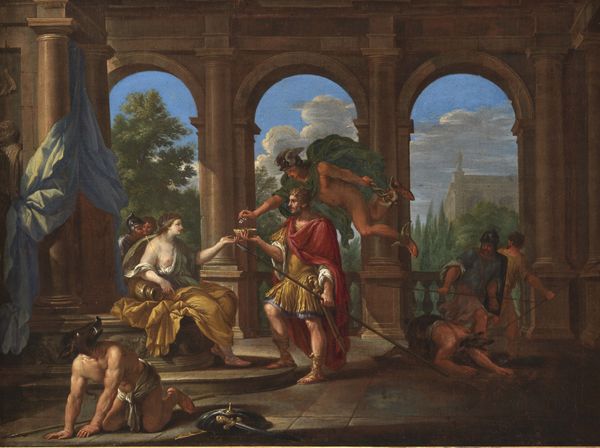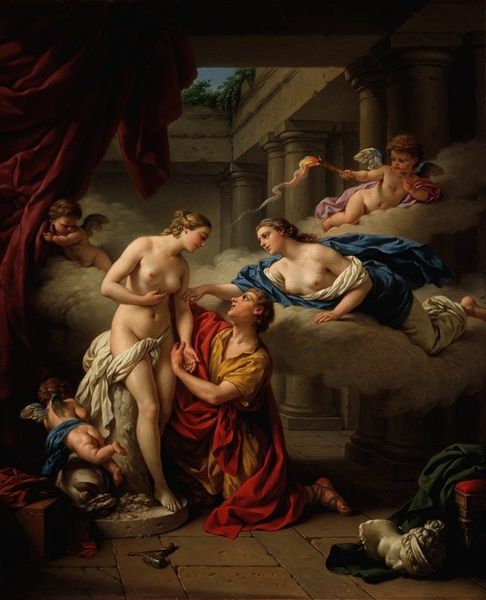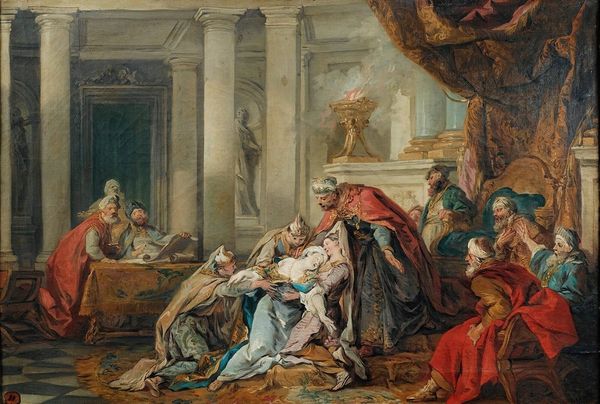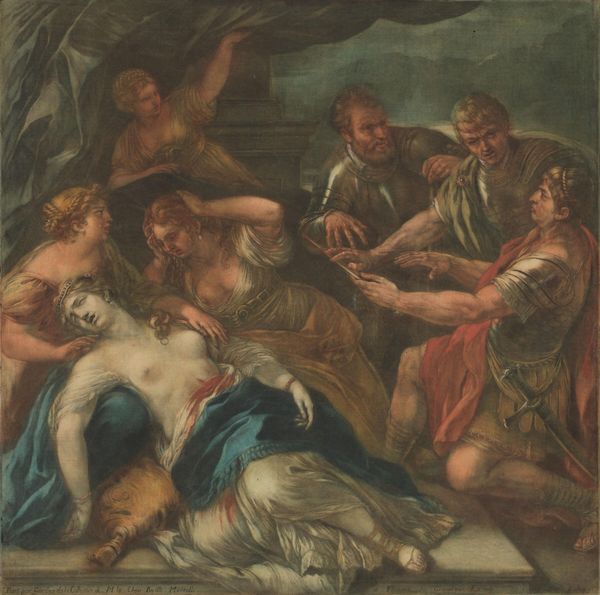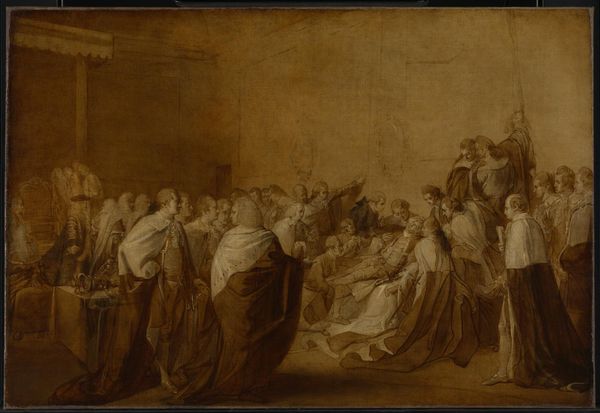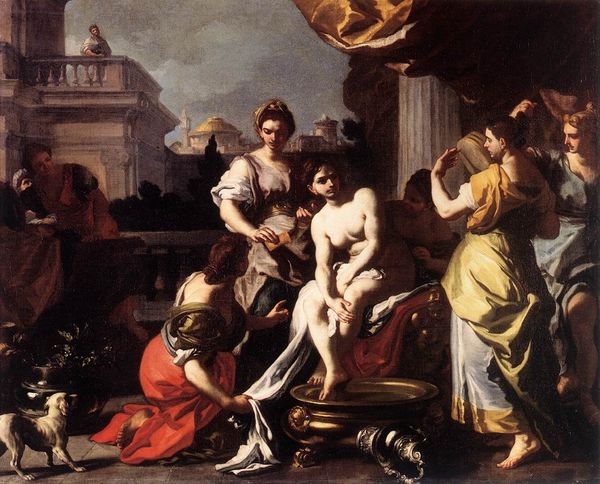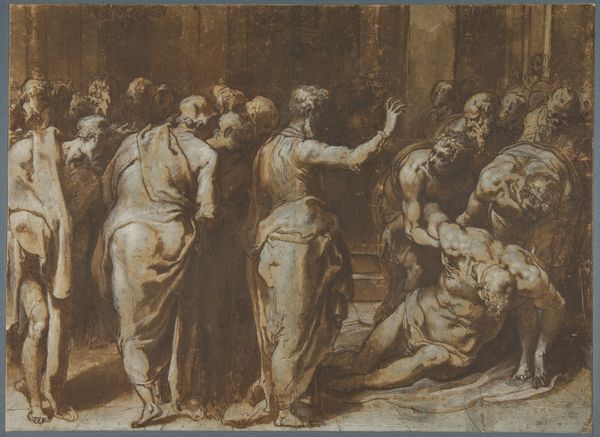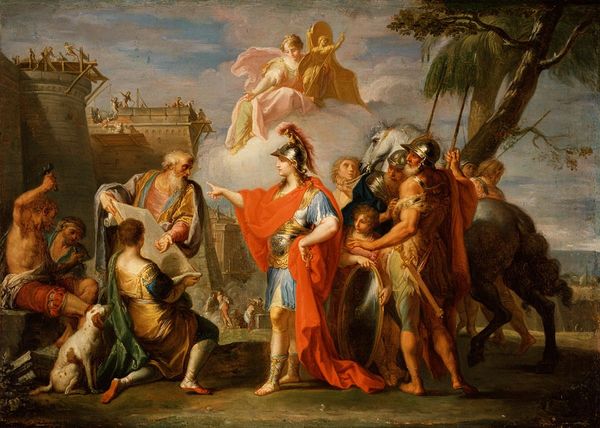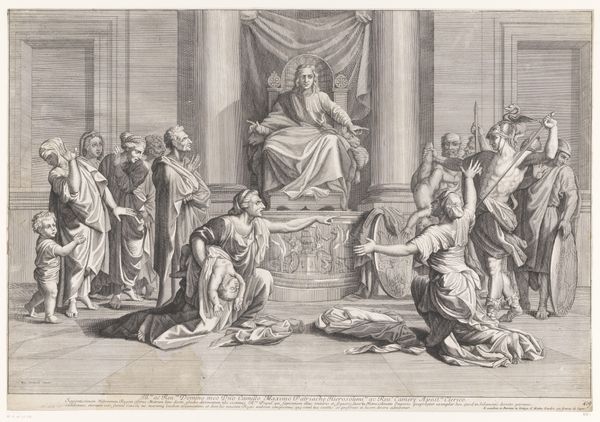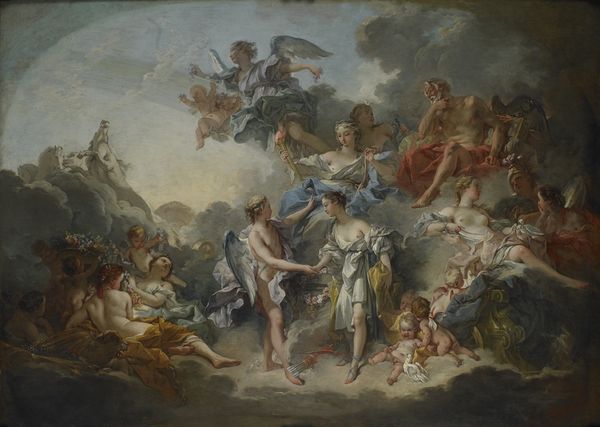
painting, oil-paint
#
portrait
#
allegory
#
narrative-art
#
baroque
#
painting
#
oil-paint
#
figuration
#
oil painting
#
history-painting
#
academic-art
Copyright: Public domain
Sebastiano Conca painted *Idolatry of Solomon* sometime in the 18th century. Conca’s Italy was shaped by powerful religious institutions that used art to teach morality. The painting depicts the biblical King Solomon, known for his wisdom, succumbing to idolatry, influenced by his foreign wives. This scene reflects concerns about the dangers of foreign influence and the importance of religious purity. The women are depicted as alluring figures, emphasizing their seductive power over Solomon. Their presence introduces themes of gender and power dynamics, portraying women as both influential and potentially corrupting figures. Conca’s choice to paint this scene during the 1700's reflects the church's views on the importance of maintaining cultural and religious boundaries. The emotional tension in the scene captures Solomon’s internal conflict. Ultimately, the painting prompts us to consider how cultural and personal desires intersect with religious beliefs, shaping individual and collective identities.
Comments
No comments
Be the first to comment and join the conversation on the ultimate creative platform.
